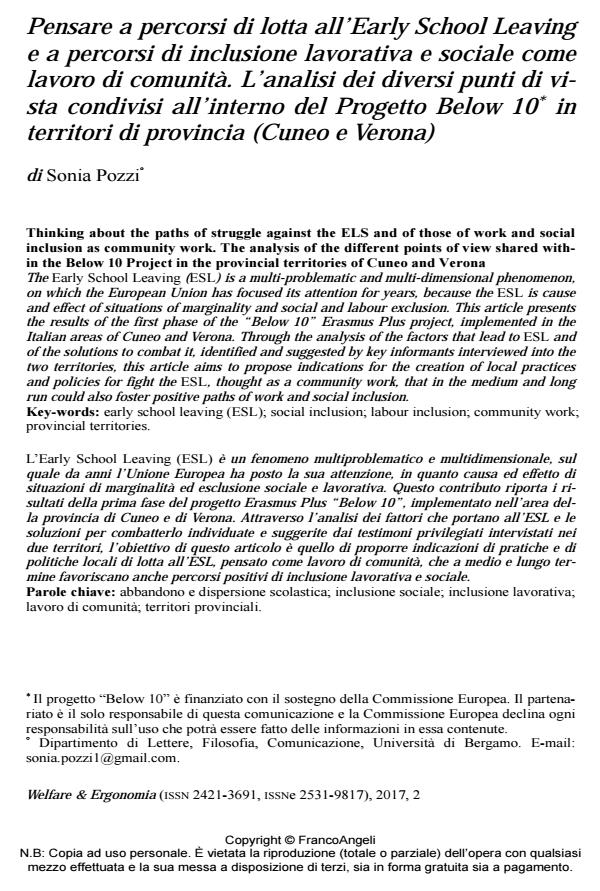Thinking about the paths of struggle against the ELS and of those of work and social inclusion as community work. The analysis of the different points of view shared with-in the Below 10 Project in the provincial territories of Cuneo and Verona
Journal title WELFARE E ERGONOMIA
Author/s Sonia Pozzi
Publishing Year 2019 Issue 2017/2
Language Italian Pages 21 P. 63-83 File size 262 KB
DOI 10.3280/WE2017-002004
DOI is like a bar code for intellectual property: to have more infomation
click here
Below, you can see the article first page
If you want to buy this article in PDF format, you can do it, following the instructions to buy download credits

FrancoAngeli is member of Publishers International Linking Association, Inc (PILA), a not-for-profit association which run the CrossRef service enabling links to and from online scholarly content.
The Early School Leaving (ESL) is a multi-problematic and multi-dimensional phenomenon, on which the European Union has focused its attention for years, because the ESL is cause and effect of situations of marginality and social and labour exclusion. This article presents the results of the first phase of the "Below 10" Erasmus Plus project, implemented in the Italian areas of Cuneo and Verona. Through the analysis of the factors that lead to ESL and of the solutions to combat it, identified and suggested by key informants interviewed into the two territories, this article aims to propose indications for the creation of local practices and policies for fight the ESL, thought as a community work, that in the medium and long run could also foster positive paths of work and social inclusion.
Keywords: Early school leaving (ESL); social inclusion; labour inclusion; community work; provincial territories.
Sonia Pozzi, Pensare a percorsi di lotta all’Early School Leaving e a percorsi di inclusione lavorativa e sociale come lavoro di comunità. L’analisi dei diversi punti di vista condivisi all’interno del Progetto Below 10* in territori di provincia (Cuneo e Verona) in "WELFARE E ERGONOMIA" 2/2017, pp 63-83, DOI: 10.3280/WE2017-002004